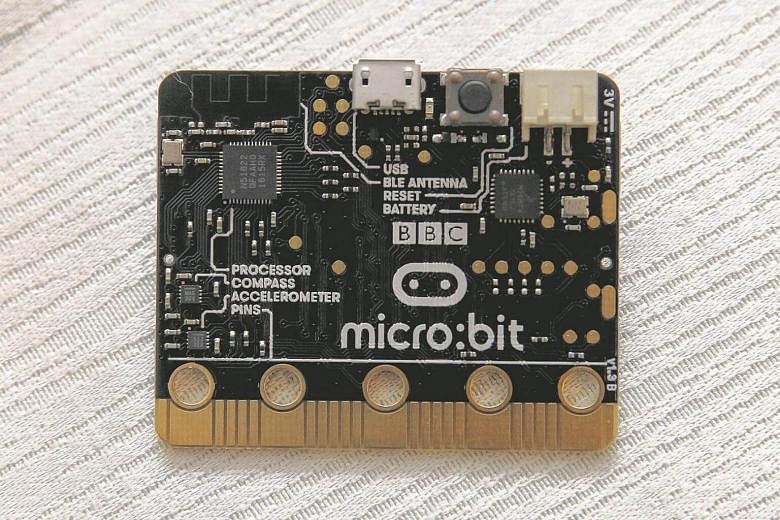Tinker. Play. Have fun.
They are the code words to unlock Singapore's future army of computer geniuses to seize opportunities in the digital space.
Last Thursday, Minister for Communications and Information Yaacob Ibrahim said Singaporeans need a curious mind and the passion to tinker and create things with their hands to be better prepared for the digital future.
Towards this end, he announced a $3 million plan to roll out a pocket-size, codeable computer called the micro:bit to 100,000 school-going children and adults over the next two years.
By writing codes, users can turn the $30 micro:bit into a locator tool, for instance, by detecting the presence of another micro:bit tagged to their belongings.
The idea is to let the children - and likewise, adults - tinker with it, while they learn to code and, perhaps, develop a love for technology.
The new tool builds on the success of an existing Code for Fun enrichment programme - introduced in June 2015 in Ministry of Education schools using robotic kits such as Lego Wedo and MoWay, and microcontrollers such as Arduino to teach computational thinking.
To date, 128 out of a total of more than 300 primary and secondary schools are on board, and some 56,000 students have signed up.
Britain is a forerunner in this aspect, making the bold move in September 2014 to teach children from age five programming as part of their school curriculum.
While not all children will become computer scientists or software engineers, they will gain from developing digital literacy as technology becomes more intertwined with daily living.
Programming also promotes logical thinking and creative problem-solving - critical skills for the future workforce in a fast-changing, unpredictable world.



